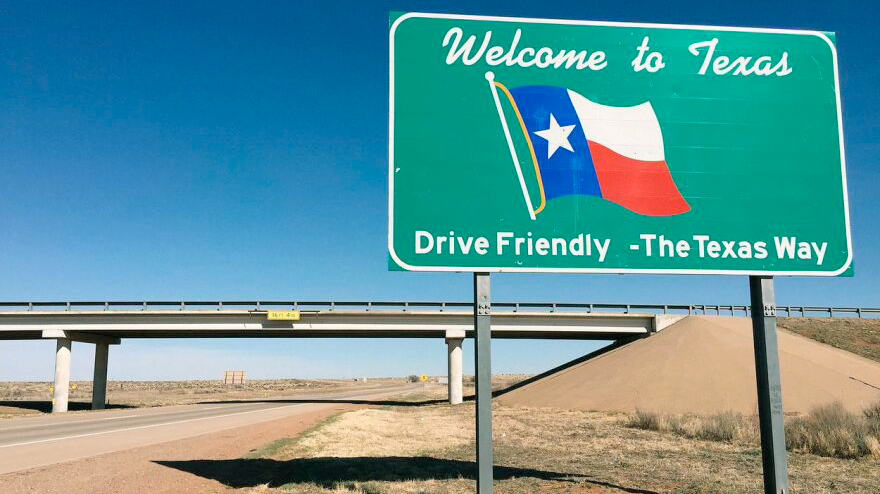By: Henry Olsen – nationalreview.com –
Conservatives have noticed approvingly that deep-blue states such as California and New York have been losing residents to deep-red ones such as Texas and Florida since the pandemic. Many note that this points to the comparative advantage low-tax places have in attracting businesses and families. Few have noted, however, the possibly profound positive effect this migration — if it continues — will have on the Republican Party’s chances to win power.
The Brennan Center for Justice, a liberal nonprofit, recently projected that states that Joe Biden easily carried in 2020 would lose a net twelve House seats to states carried by Donald Trump. Another two seats would move from two Rust Belt swing states, Michigan and Pennsylvania, to the Sunbelt swing states of Arizona and Georgia. As a result, if this projection proves correct, a Republican candidate in 2032 would be able to capture the White House simply by winning the Trump states plus Arizona and Georgia.
That alone would be potentially groundbreaking. As is often noted, Republicans have won a majority of the popular vote only once since 1988. Normally, that would make it impossible to win the presidency, but the GOP coalition has been historically imbalanced. The GOP’s reliance on whites without four-year degrees means it can win states that have large numbers of such voters while losing elsewhere. Therefore, since 2012, its losing margins in blue states have increased as well as its ability to contest other states. The GOP coalition does not need a popular-vote majority to win the Electoral College.
Current population trends will exacerbate that gap between support among voters and support in the Electoral College. In 2020, Trump lost the popular vote by 4.4 percentage points and the three closest states — Arizona, Georgia, and Wisconsin — by less than one point each. Had he lost the popular vote by only 3.7 points, assuming a uniform national swing, he would have carried all three states. Had that election occurred after the recent population shifts and the related reapportionment, however, he would not even have had to win Wisconsin: He might have lost by four points nationally, carried Arizona and Georgia, and won the Electoral College.
One might worry that migrants from blue states are bringing their politics with them, endangering the GOP’s hold on their destinations. That’s possible, but the data thus far show the exact opposite: Republican strength has been rising in destination states since the pandemic migrations, not falling.
Florida is an excellent example. When Biden took office, Democrats had a 97,000-person lead in voter registration. Today, Republicans have a massive 698,000-person lead, which is growing every month. What was once an archetypal swing state is now clearly turning red.
Other states that are expected to gain House seats show similar trends. North Carolina remains a light-red state, and its Democratic voter-registration plurality has shrunk from 374,000 to 194,000 during Biden’s presidency. Democrats have lost more than 56,000 registered voters in Arizona over the past year despite the state’s population explosion.
Nor do election results in states without partisan registration suggest a rising blue tide. Texas governor Greg Abbott was easily reelected in 2022 against former congressman and progressive heartthrob Beto O’Rourke. It’s true that Abbott’s margin declined from 13.3 points in 2018 to 10.9 last year, but that might have been simply a result of his running against a better-known and -funded candidate. It’s also true that Abbott did better in heavily Latino-populated areas along the Mexican border, including in O’Rourke’s home city of El Paso, than he had done in 2018. There’s no indication that migration to Texas will turn the state purple, much less blue, by the 2030s.
The population shifts will also help the GOP significantly in Congress. Democrats hold the Senate only because they have all four Georgia and Arizona seats. If this migration is only slightly tilted toward the GOP, Democrats’ ability to keep those seats will be seriously threatened.
Moreover, Democrats are likely to lose House seats because people are leaving their base metropolitan areas. Since 2020, population has decreased in New York, Los Angeles, Chicago, and the San Francisco Bay Area, which means there are fewer heavily Democratic precincts to spread around even a gerrymandered map in 2030. If these trends persist, over the next decade, expect Democrats to lose up to ten seats in the states that are losing population — and Republicans to gain most of the new seats elsewhere.
If these population trends remain constant or accelerate, the 2030 reapportionment will likely give a significant boost to Republican power in Washington.
To see this article in its entirety and to subscribe to others like it, please choose to read more.
Source: Migration from Blue States Could Boost GOP Power in D.C. | National Review
 Listen Online
Listen Online Watch Online
Watch Online Find a Station in Your Area
Find a Station in Your Area








 Listen Now
Listen Now Watch Online
Watch Online
